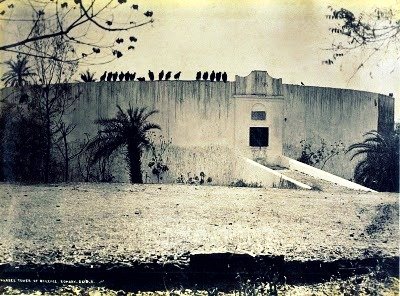Is real change coming to Iran? Get ready for March 15, 2017
The hidden Zoroastrians may actually bring about the end of the Ayatollah regime.
The social makeup of Iran’s population is very complex, because there is actually no such thing as an Iranian people. There are, instead, Iranian citizens divided into many ethnic groups: Persians make up about 60% of the population, while the rest are Azars, Kurds, Blouchis, Arabs, Turkmen and tens of smaller ethnic groups.
The main religion in Iran is Shia Islam, adhered to by 90% of the country’s people, while Sunnis – mainly Kurds and Blouchis – make up about 10%. The country recognizes Judaism, Christianity and Zoroastrianism and reserves a parliamentary seat for each religion.
Zoroastrianism is based on the belief in two gods, a good one and an evil one.The world is the arena in which they battle one another. Daytime is when the good god wins and nighttime is the time the evil god has the upper hand. Good occurrences are arranged by the good god, bad ones are the fruit of the evil god’s labors.
Zoroastrianism was the official religion of the Sassanid Persian Empire, vanquished and destroyed in the 7th century Islamic-Arab conquest. The Arabs forced most of the Zoroastrian believers to accept Islam, and punished whoever stayed loyal to his original religion by death. Despite that persecution, or because of it, many of today’s Iranians are Zoroastrians who pretend to be Muslims. No one has any idea who is a secret Zoroastrian and who is an authentic Muslim, because everyone identifies himself as Muslim, knows how to pray and is familiar with the laws and customs of Islam.
During my academic career, I met many Iranian expatriates. Some of them told me that the number of people in Iran who are loyal to the Zoroastrian religion is in the millions and in fact numbers many millions, but that all of them succeed in passing as Muslims and even in having a significant presence in the Ayatollah regime. Many of them serve in the Iranian Army and in the Iranian Revolutionary Guards, a good number of them having reached the upper echelons of the Revolutionary Guards.
Every once in a while they burst out to demonstrate, the last time being in 2009 after the Iranian presidential elections were faked, allowing power to be snatched by Mahmoud Ahmadinejad. The country was filled with demonstrators, which could have ended with the Ayatollahs fleeing in planes that stood fueled, ready and waiting in the Tehran airport – had the protests continued. The brutal suppression of the demonstrations brought about their end – till next time.
President Obama did not support the protestors at that time, probably because of the empathy he had – and still has – for the Ayatollah regime, an empathy that brought him five years later to grant that dark regime the possibility of continuing its satanic plans to acquire nuclear power in another decade.
On Wednesday, March 15, 2017, the Zoroastrian holiday of Chahar Shanbeh Soori will occur. Zoroastrians all over Iran are planning a “Freedom Holiday” for that date, intending to burst out into the streets in an attempt to overthrow the Ayatollah regime If they are able to get rid of their Muslim rulers, they intend to bring the Shah’s son, at present in exile in Europe, back to Iran to assume the leadership of the country like his father, who was deposed at the end of 1978.
The Zoroastrians are using social media to organize the protests as well as passing information from one person to another among those whom they consider to be trustworthy. They estimate that there is enough time until mid-March to bring the message to the ears of every Zoroastrian in the country and to prepare them physically and psychologically for the “Freedom Holiday.”
Can this plan being an end to the Ayatollah regime? It most certainly can, if the Zoroastrians actually all go out to the streets and cause other “outsider” groups, who suffer economically and socially from the unbearable corruption that has taken over government officials, to join them.
If the many hidden Zoroastrians who serve in the armed forces turn their weapons on their Muslim colleagues, the army will be paralyzed, and so will the Revolutionary Guard, the Basij militia forces and the branches of Army Intelligence. This will allow the Zoroastrians out in the street to take over the public sphere and force their own agenda upon it.
The Zoroastrians-in-exile, who encourage and advertise the “Freedom Holiday” are hopeful that this attempt will succeed, especially because the new US president Donald Trump is not exactly pro-Islam and certainly not in favor of the Ayatollahs ruling Iran. He, as opposed to Obama, might actually support the rebels and take concrete steps against the Iranian government if it comes down heavily against the protestors, as it did in 2009.
I do not recommend holding one’s breath in anticipation of the success of Iranian Zoroastrians, because it is not entirely clear that they are seriously planning action against the hated government – and even if they do go out to the streets, it is not at all sure they will succeed in getting the Ayatollahs to board those waiting planes out of the country. Success depends on a great many factors whose actions on that fateful day are hard to predict..
Still, taking into account the determination of the organizers, I have a reasonable basis for expecting them to carry out their plans in and around the middle of March. I send them my wishes for success from this podium. Israel will be only too pleased to return to the days of its good relations with Iran – the days before the Islamist revolution destroyed the Shah’s regime towards the end of 1978.
Written for Arutz Sheva, translated by Rochel Sylvetsky, op-ed and Judaism editor
Published on Arutz Sheva





